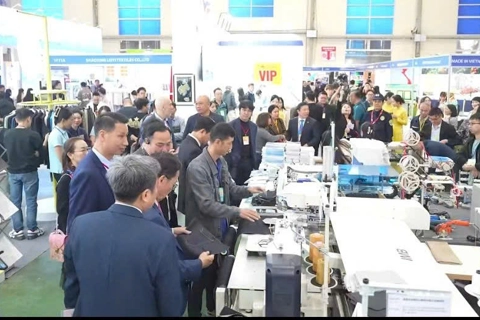Over 2.65 million passengers on Hanoi's first metro line in Q1
The line has contributed to gradually creating a habit of using public transport in the city with the high rate of private vehicles.
The Cat Linh-Ha Dong metro line, the first of its kind in Hanoi, carried more than 2.65 million passengers in the first quarter of 2023, an increase of 262% year-on-year, according to Vu Hong Truong, general director of Hanoi Railway Company Limited (Hanoi Metro), the line's operator.
"The metro line, also known as Line 2A, sees an average of 32,000 passengers daily and about 28,000 on weekends. Currently, there are 10,000 commuters using monthly passes," Truong said.
The Cat Linh-Hanoi Dong Metro Line. Photo: Pham Cong/The Hanoi Times |
The trains run from 5:00 to 23:00 daily, with a frequency of six minutes at rush hour and ten to fifteen minutes at ordinary hours.
The fare varies between VND8,000 (US$0.34) and VND15,000 ($0.65), while full-day and monthly passes are priced at VND30,000 ($1.3) and VND200,000 ($8.8), respectively, and a half for students.
While the maximum speed is 80 kilometers per hour, trains travel at 35 kilometers per hour during normal service. The average waiting time for passengers is between six and ten minutes.
According to the director, the metro line has changed the commuting habits of local people, with many leaving their private cars at home to take the metro. "The line has contributed to gradually creating a habit of using safe and friendly public transport," he said.
Hanoi's public transport capacity has also increased to over 30% in the first three months, while Hanoi has set a target to increase this figure to 35% by 2025, Truong said.
"Based on the successful experience of the Cat Linh-Ha Dong metro line, we are confident that the Nhon-Hanoi Station line, the second line, will also be a success once it is effectively put into operation," he noted.
Meanwhile, Le Trung Hieu, a transportation expert, said that since its official opening, Line 2A had achieved four key objectives: safety, attracting passengers, reducing the use of private cars, and gaining experience in managing and operating urban railways.
He said it's necessary to increase the completion of the public transport network to increase ridership, which currently reaches only 15% of the line's capacity.
He noted that there are seven sets of tasks to be performed to operate a light rail system effectively. These include corporate structure, recruitment and human resources, system maintenance and operation procedures, fare policy, pilot program and early operation support, and subsidy planning.
The elevated line, which is more than 13 kilometers long and has 12 elevated stations and 13 trains, cost an investment of $868 million and was funded by China's official development assistance (ODA). The project was kicked off in 2011 at the initially-estimated cost of $553 million.
The line began operating in November 2021. It was officially inaugurated on January 13, 2022, the day it carried its one-millionth passenger.











